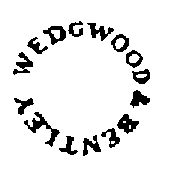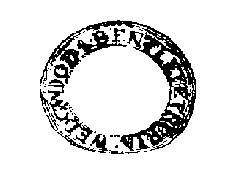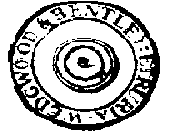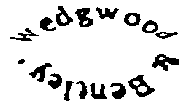Ceramic Trade Marks - W
Initials Used as Trade Marks - W
|
|
North Staffordshire Pottery Marks |
|
|
Josiah Wedgwood (& Sons Ltd) |
![]()
|
NOTE: If the ware has '& CO' in the mark or stamp then it does not belong to Josiah Wedgwood but to Wedgwood & Co (Ltd) |
![]() How
to Date Wedgwood
How
to Date Wedgwood
![]() Josiah
Wedgwood the Potter
Josiah
Wedgwood the Potter
![]() Wedgwood
Ware
Wedgwood
Ware
[ See: Confused about Wedgwood? ]
| Is it real
Wedgwood?
The Wedgwood Collector is faced with many imitators and unscrupulous rival manufacturers who either traded on a relationship to the Wedgwood family by marking their wares so that the uninformed might buy them thinking that they were getting Wedgwood quality or left their products unmarked so that the buyer might attribute their work to the Wedgwood potteries. Some of the imitators' work is quite good and would grace a collection of 18th and 19th century English potters work. Fortunately Josiah was the first potter of note to mark his production with his own name, rather than easily copied potters marks like the crossed sword mark used at Sevres or the Chelsea potteries' anchor mark. Josiah was not reticent to defend his marks and reputation in court during his lifetime and his successors have followed that pattern to the present day. While early Wedgwood works may be unmarked, the presence of the correct mark is both an indication that the piece is genuine and an index of its age. After 1781 few unmarked pieces can be correctly attributed to Wedgwood Beware of ware marked 'Wedgwood & Co' by Enoch Wedgwood and also ware of the 1790-1801 period by the Knottingley Pottery which was also marked 'Wedgwood & Co' |
|
Josiah Wedgwood (& Sons Ltd) Famous manufacturer of earthenware and porcelain at Burslem then Etruria and lastly Barlaston (where the factory is currently situated) c.1759+ |
|
|
Mark |
Description
& date |
|
|
Basic impressed name-mark on
earthenware. c.1759+ Early examples show individually impressed letters. Josiah started marking his wares about 1759 with impressions made with printers movable type. Each letter was impressed separately and and the mark is uneven and often in curved shape. Much of the production remained unmarked. These marks were used through 1769. |
|
|
In 1769 the work of Josiah's partnership
with his cousin, Thomas Wedgwood for the manufacture of useful wares is
impressed with this mark made with a slug.
After the death of his partner Bentley in 1781(see marks below) this mark was used instead of the 'Wedgwood & Bentley' marks. The mark was used on both useful and decorative pieces. This impressed mark remains the usual mark until the adoption of the sans serif version in 1929. |
|
WEDGWOOD & BENTLEY
W & B |
Commencing in
about 1769 the decorative works produced by Josiah's partnership with Bentley
were marked with one of the three of these marks either impressed or raised
from the body.
Examples of these impressed 'Wedgwood & Bentley' marks are rare. Found on ornamental basalt, jasper and marbled wares.c.1769-80 NOTE: The circular mark has been added to unmarked objects; these fake marks are relatively soft and can be marked by a pin, knife etc. |
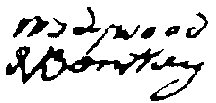
|
This extremely rare script mark is used on ornamental wares between 1769 and 1780. |
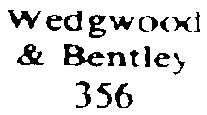
|
These three example marks were used on
smaller seals, cameos and intaglios.
The number in 356 is the Wedgwood and Bentley catalog number of the piece. |
|
|
This impressed mark is used on larger pieces, sometimes with the word ETRURIA added. |

|
These were used on all types of ware from
1780 until about the time of Josiah's death in 1795.
The top mark is the upper and lower case mark and the bottom is called the lower case mark. |

|
This very rare impressed mark dates the piece at about 1790. |

|
This rare mark used by Josiah Wedgwood II is found on lustre ware, basalts, rosso antico and Jasper Ware pieces. |
|
|
Printed in red, blue
or gold name-marks on porcelain (rare).
c.1812-22 |

|
This printed mark appears on the stone china range manufactured between 1820-61. |

|
Impressed mark with the
place 'ETRURIA' added.
c.1840-5 |
 EMILE LESSORE |
Typical signature marks found on
Wedgwood earthenware painted by the French artist Emile Lessore.
c.1858-76 |
|
wedgwood ENGLAND |
England added from 1891 |
|
wedgwood MADE IN ENGLAND |
Made in England added from 1910 |
|
|
Impressed 'sans serif'
name-mark on earthenware from c.1929
|
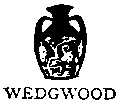
|
Basic printed mark on porcelain,
c.1878+
England added from 1891 The description 'BONE CHINA' was sometimes used. |
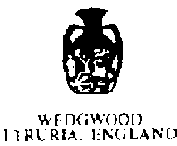
|
Rare impressed mark on Queen's ware 1891-1900. |
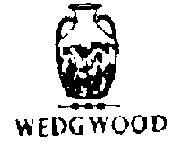
|
Printed mark on bone china from 1900 onwards ENGLAND OR MADE IN ENGLAND added below. |
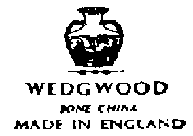
|
Printed mark on bone china from about 1902. |
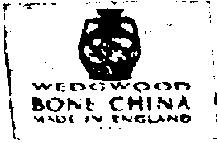
|
Machine printed mark on bone china 1950-62. |
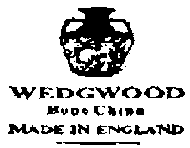
|
Bone china mark introduced in 1962. |
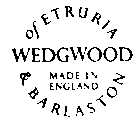
|
Standard printed mark from c.1940 |
![]() How
to Date Wedgwood
How
to Date Wedgwood
![]() Josiah
Wedgwood the Potter
Josiah
Wedgwood the Potter
![]() Wedgwood
Ware
Wedgwood
Ware
Useful Key Dates
1775 Jasper perfected and introduced
1777 Jasper dip introduced
1780 Death of Thomas Bentley and the end of the Bentley and Wedgwood partnership
1805 underglaze blue printing introduced
1806 Lustre introduced
1812 First printed mark
1827-41 Francis Wedgwood in partnership with Josiah II and Josiah III
1860 Majolica introduced. Three letter impressed mark (dating code) introduced for earthenwares
1875-85 Turquoise jasper introduced
1891 'England' mark introduced
1895 Incorporation of firm as Josiah Wedgwood and Sons Ltd.
1912 Powder blue decoration introduced
1953 Royal blue Jasper introduced to celebrate the coronation of Queen Elizabeth the II.
1980 250th anniversary of Josiah I birth, and 200th anniversary of the end of the Wedgwood and Bentley partnership
![]()
Back to Pottery - Ceramic Trade Marks
[Main Index Page ] [ Steve Birks Home Page ]
Questions and comments to:
Steve
Birks


